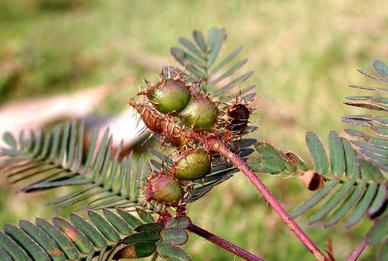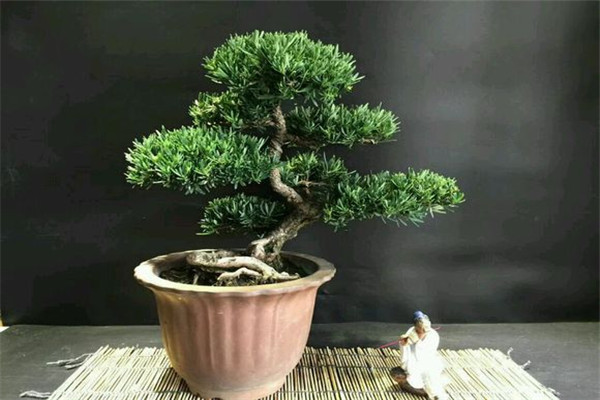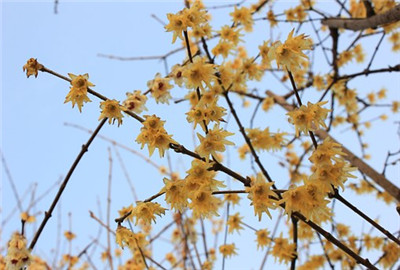[excuse me] what does mimosa look like? Is it poisonous? How do you raise it?
Mimosa is a perennial herb or subshrub of Leguminosae, which is named mimosa because its leaves respond to heat and light and close immediately when touched by external forces. So what does the mimosa look like? Is it poisonous? How do you raise it? Let's take a look at it right away.

The flowers, leaves and pods of mimosa have better ornamental effect, and are easy to survive, so they are suitable for potted flowers in balcony and indoor (human consumption or excessive contact with mimosa will also cause hair loss). It can also be planted in the courtyard and other places. Mimosa is different from other plants. When touched by people, its petiole is drooping and its small leaves are closed, so people understand it as "shy", so it is called inductive grass, drinking grass, mimosa, mimosa and ugly grass (Cantonese). Native to tropical South America, it likes to be warm and humid and has general requirements for soil.
What does the mimosa look like?
Mimosa is shaped like a fluffy ball. Pods bear fruit after flowering, and the fruit is flat and round. The leaves are feathery and compound leaves are alternate and arranged in palms. Flowering about after the height of summer, heads oblong, 2-3 in leaf axils. Flowers are white, pink, calyx campanulate, with 8 tiny calyx teeth, petals quadrifid, stamens 4, ovary glabrous. The pod is flattened, with 1 seed per pod node, and the internodes fall off at maturity. The florescence is September.
Second, mimosa flower language
1. Sensitive, sensitive heart
2. Shy
3. Politeness
4. Warm friendship
Don't say you love me
6. Knowing shame
Once upon a time, there was a poor man named Han, who could not stand the abuse of his sister-in-law, so he left home and went out to dominate the world alone. He was so diligent that less than a few years later, the celestial fairies fell in love with him and were reincarnated. After the acquaintance of Miss Huan and Han, the two fell in love and tied the knot. The young couple lived a very sweet life.
However, happy days do not last long. Because Han's sister-in-law was jealous of them, she tried every means to destroy the couple, and even viciously wanted her sister-in-law to do the rough work for her. One day, my sister-in-law asked to come to her house and weave a hundred feet of cloth for her. the happy childbirth period was approaching, but she could not refuse her sister-in-law, so she had no choice but to go. She weaves cloth for her sister-in-law day and night. Unexpectedly, before the cloth is finished, she will give birth. Finally, she had to wave to the sky.
An incredible group of fairies flew into the house to weave cloth for her. The cloth was finished before dawn. Who knows, Han's sister-in-law unexpectedly witnessed everything, she added to tell Han, reprimanded Huan is a monster. And Han actually believed it and secretly hacked her to death while she was sleeping. After that, Han found that Huan was reincarnated as a fairy. He knew he was wrong and felt sorry for his wife. He was ashamed and ashamed all day. Finally, he died of excessive grief.
Later, a blade of grass grew on Han's tombstone. as soon as the wind blew or was touched, the leaves would close. They all said that the leaves of Han opened and closed because of shame. Therefore, this kind of grass is called mimosa.
Is mimosa poisonous?
There are trace toxins in the whole plant of mimosa. The plant itself contains a substance called mimosa alkaloid, which can cause hair yellowing and falling if you come into close contact with mimosa for a long time. Potted indoors can purify the air, beautify the ornamental, but also have a slight harm to the body.
Mimosa will not cause harm to the human body during the day, but at night, mimosa can not carry out light and action, it will release toxic substances. Therefore, the mimosa placed indoors had better be placed on the balcony to avoid long-term contact with physical and mental harm.
Compared with indoor, mimosa is more suitable for balcony or outdoor planting, its growth needs strong light, indoor light conditions, can not meet the needs of mimosa growth, more contact will also cause harm to the human body, but also easy to make mimosa leaves fall.
1. Can a pregnant woman raise mimosa at home?
Mimosa contains a recommended alkali, it is best not to breed in the home of pregnant women, the physique of pregnant women is weak, mimosa is very easy to cause hair loss of pregnant women, seriously may lead to miscarriage of pregnant women, in addition to mimosa, in families with pregnant women, breeding flowers and plants is always disadvantageous to pregnant women and will affect the fetus in the body.
2. Is there a child at home who can raise mimosa?
Mimosa is small and interesting and can attract children's interest and attention. long-term contact with mimosa can lead to skin damage, decay of hair follicles, yellowing and shedding of hair and eyebrows. Therefore, if there are children at home, it is best not to raise mimosa.
Fourth, how to raise mimosa?
Mimosa is a taproot plant with few fibrous roots, which is suitable for sowing and reproduction, and it is best to adopt the method of direct seeding to avoid root injury by transplanting; if transplanting is necessary, it should be transplanted at the seedling stage, otherwise it is not easy to survive, as an annual mimosa, it is generally sown indoors in early spring.
1. Pre-seed preparation: direct seeding in small pots or seedling cultivation in shallow pots can be used. The sowing soil was prepared with 20% rotten leaf soil, 30% garden soil and 50% fine yellow sand after sieving. When sowing, first put an appropriate amount of culture soil in the basin, smooth and compacted, sprinkle through water with a spray pot, and sow immediately after all the water permeates.
2. Planting method: direct seeding in small pot, sowing 1-2 seeds in each pot. If the seedlings are raised in a shallow basin, the seedlings will be sown on demand at the distance of 2cm × 2cm. It is appropriate to cover the seeds with 3~5cm after sowing. Cover the basin with glass or plastic film to moisturize the basin and place the basin at about 20 ℃ of astigmatism. In the future, when the basin soil is dry, the basin method will be used to irrigate the soil. After about 7-10 days, the seeds germinated and germinated.
3. Seedling emergence culture: after emergence, the cover on the basin should be removed and the sun should be accepted gradually. When the seedlings grow to the height of 3cm, the seedlings sown in the shallow pot can be divided and transplanted. Seedlings should be transplanted with soil, otherwise it is not easy to survive. After watering the seedlings in the pot, put them in a semi-shady place, wait for the seedlings to slow down, and then move to a sunny place. The direct broadcast in a small basin can be directly placed in a sunny place to grow.
4. Seedling culture: in the middle of April in the south and at the beginning of May in the north, the seedling pot can be moved out of the outdoor for cultivation, and the pot soil can be kept moist by watering in time. The seedlings began to apply liquid fertilizer when they grew to 4 leaves, and the liquid fertilizer could be matured once in 7-10 days. When the seedlings grow up, you can change the pot again, but the pot should not be too large. It can be planted in the medium flowerpot of 15~20cm.
Matters needing attention
During the growth period of mimosa, it can be combined with watering and apply rotten dilute liquid fertilizer (3-4) every 10 days or so. As a potted ornamental flower, it is easy to move into the sunny place indoors and can survive the winter safely at a room temperature of 0-12 degrees.
Moisture: like to be moist, watered once a day during the summer growth period. Fertilizer: topdressing is applied once every half month at seedling stage. If you do not want the plant to be too large, you should reduce the amount of fertilizer applied.
Soil: the soil should be deep, fertile and moist.
Temperature: not cold-resistant, like warm climate, plants die by themselves in winter.
Light: full of happy light, slightly resistant to half-shade.
Reproduction: sowing and reproduction. Sowing from late March to early April, the growth was slow in the seedling stage, and could be planted when the seedling height was 7-8 cm.
Time: 2019-04-11 Click:
- Prev

What does Luohansong culture need to pay attention to? How to shape and pose?
Pinus elliottii is an evergreen coniferous tree, up to 20 meters high, distributed in many provinces and regions of China, with few wild trees, which are mainly used in gardens as ornamental trees, so what do we need to pay attention to in the cultivation of Luohan pine? How to shape and pose? What does Luohansong culture need to pay attention to?
- Next

How to raise the plum blossom? Can its fruit be eaten?
Wax plum, deciduous shrubs, often clump, wax plum blooming in the depths of winter, fighting cold frost, showing the character of the Chinese nation that will never yield in the face of rape, giving people spiritual enlightenment and the enjoyment of beauty. It is not only suitable for courtyard planting, but also suitable for ancient pile bonsai, flower arrangement and plastic arts.
Related
- Fuxing push coffee new agricultural production and marketing class: lack of small-scale processing plants
- Jujube rice field leisure farm deep ploughing Yilan for five years to create a space for organic food and play
- Nongyu Farm-A trial of organic papaya for brave women with advanced technology
- Four points for attention in the prevention and control of diseases and insect pests of edible fungi
- How to add nutrient solution to Edible Fungi
- Is there any good way to control edible fungus mites?
- Open Inoculation Technology of Edible Fungi
- Is there any clever way to use fertilizer for edible fungus in winter?
- What agents are used to kill the pathogens of edible fungi in the mushroom shed?
- Rapid drying of Edible Fungi

